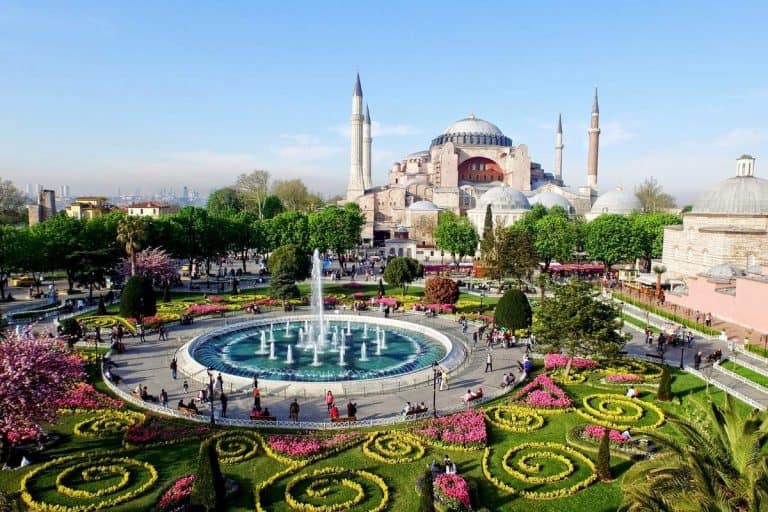Last updated on December 20, 2023
With an emphasis on simplicity, food from Italy is famous throughout the world! Though much of Italian cuisine is made with only a few ingredients, the undisputed success of these iconic dishes and recipes is largely due to the overall quality of ingredients from Italy.
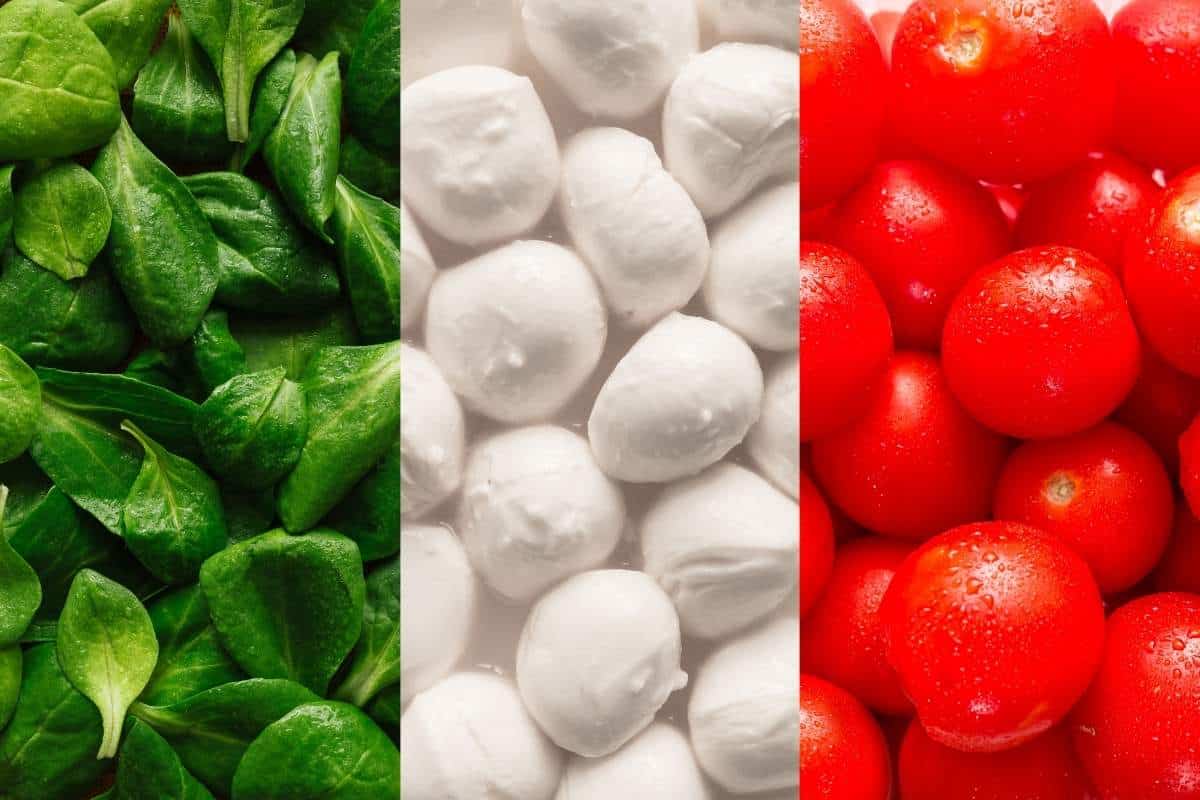
Staple ingredients include olive oil, herbs such as fresh basil and parsley, and cheese such as mozzarella, pecorino, and ricotta. Balsamic vinegar helps to complete dishes like Italian-style pizza, pasta Carbonara, and Osso Buco. Additionally, many traditional Italian dishes are finished off with simple flavorings of just salt and pepper. This simplicity extends to dessert with delicacies such as Tiramisu, Gelato, Panna Cotta, and Cannoli.
Of course, no Italian meal is complete without a glass of red wine, and Italy has some of the best vineyards in the world. Suffice to say, it’s hard to name the most famous food from Italy, as there are so many that stand out!
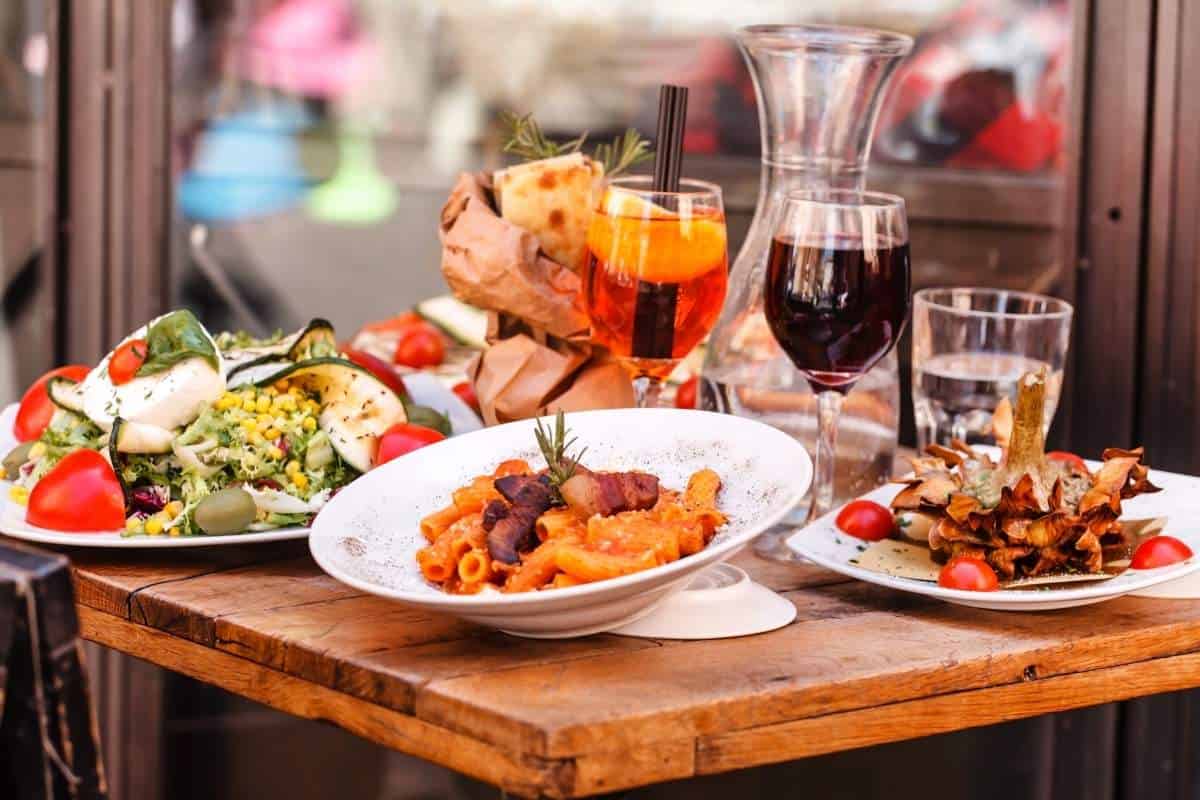
Throughout Italy, food and authentic Italian cooking are predominant and complement the gorgeous scenery. One of the most popular things to do while visiting is to taste test dishes from all the different regions as you eat in Italy! From southern Italy to Northern Italy, and everywhere in between, each region has something classic Italian and unique to offer your palette.
Now, if you’re craving even more first-hand knowledge about Italian eats, you may have to consider doing exactly what many others have done and take a foodie trip throughout the country!
Are you a frequent consumer of traditional Italian dishes? Then go ahead and test your knowledge in our quiz about Italy food facts, or if you’re not quite ready for that, read on to learn facts about food from Italy.
Facts About Food From Italy
Italian Food History
Rice, pasta, fruit sorbet (the direct predecessor of gelato), and even oranges, were introduced to Italy by the Arabs back in the 14th century.
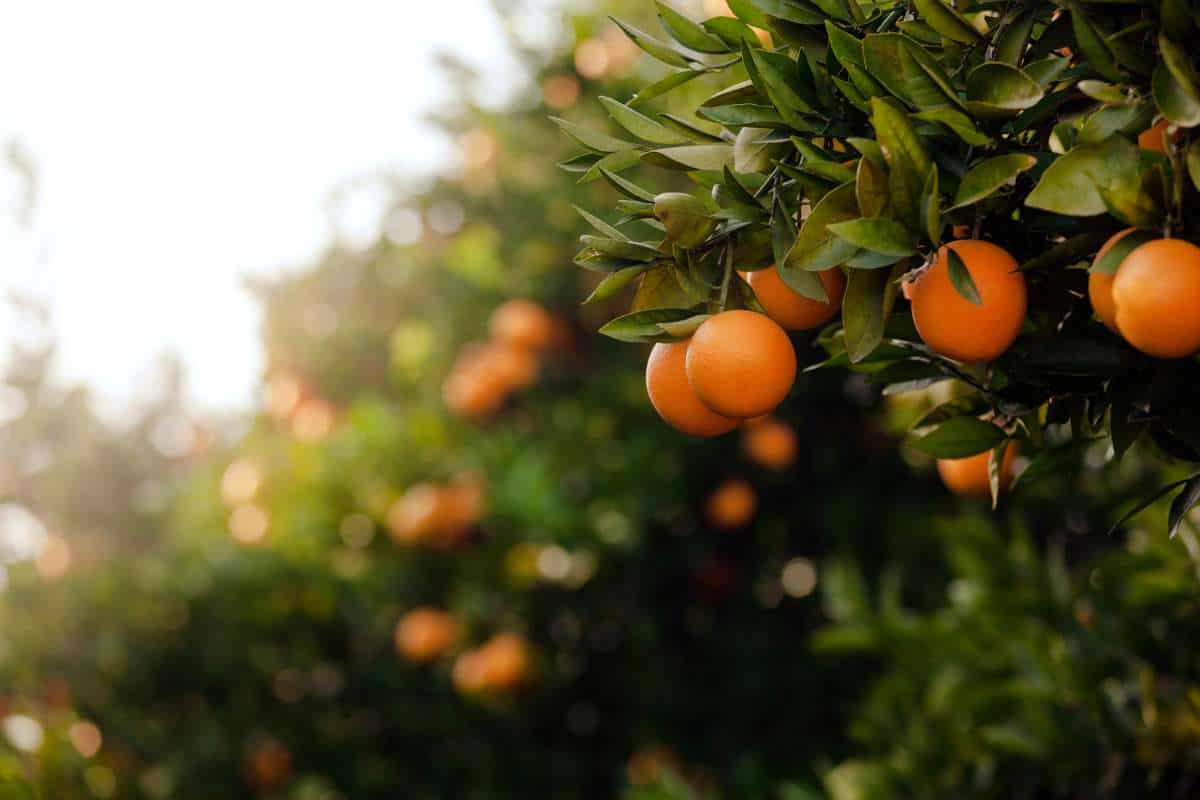
The origins of Italian food can be traced back to the fall of the Western Roman Empire when the Italian cities began to form their own independent identities.
Pesto, which is a sauce traditionally consisting of crushed garlic, pine nuts, salt and black pepper, fresh basil, and pecorino romano cheese. Pesto translates to ‘to crush’ in Genoese; this is because the ingredients used to be crushed in a mortar before final preparation. Fun Fact: The Ligurian version of pesto is the original and most popular to use in an Italian dish.
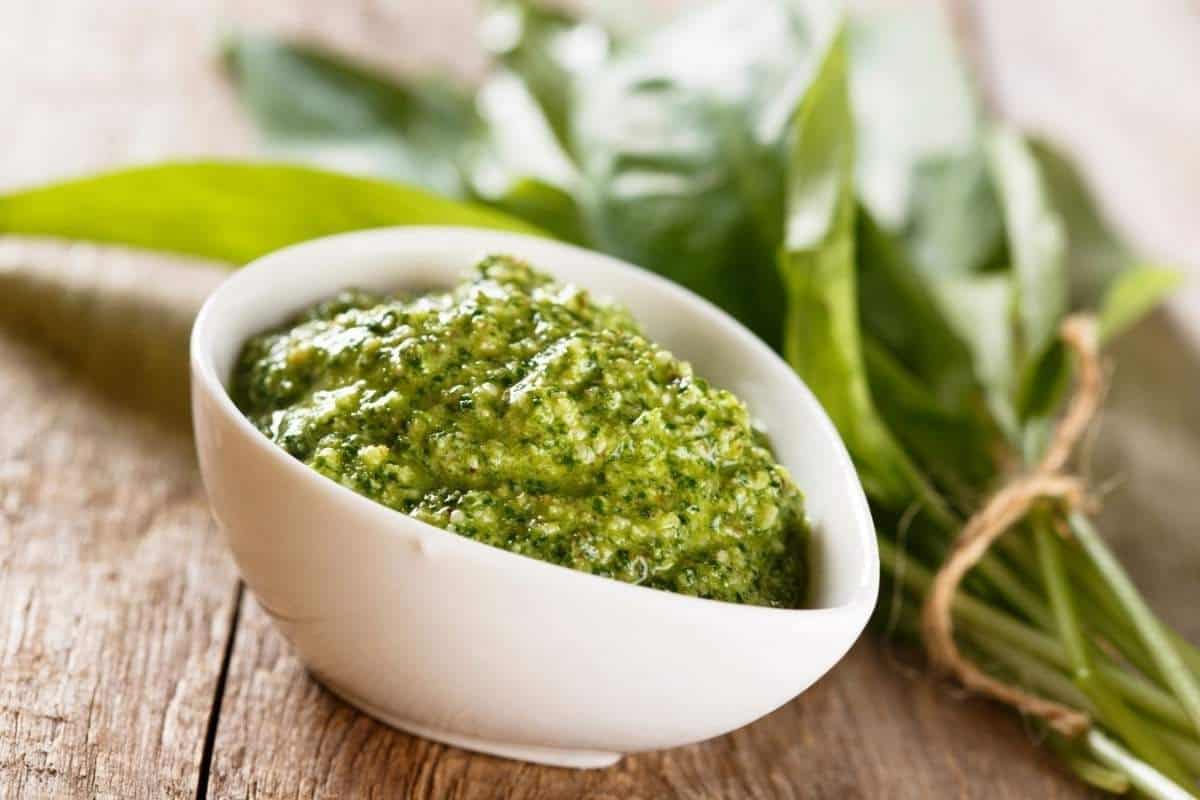
Mondeghili is a traditional Italian dish that was first introduced to Milan by the Spanish in the 16th century, and it is still enjoyed today. Mondeghili is a dish of meatballs typically using leftover beef but infused with sausage, liver, mortadella, and other pork.
Believed to have been introduced to the region of Sicily in the 14th century by the Arabs, rice has been grown in southern Italy ever since. This is the basis of the traditional Italian rice dish, risotto alla Milanese, which consists of rice cooked in broth until it reaches a creamy consistency, saffron, butter, onion, white wine, and cheese.
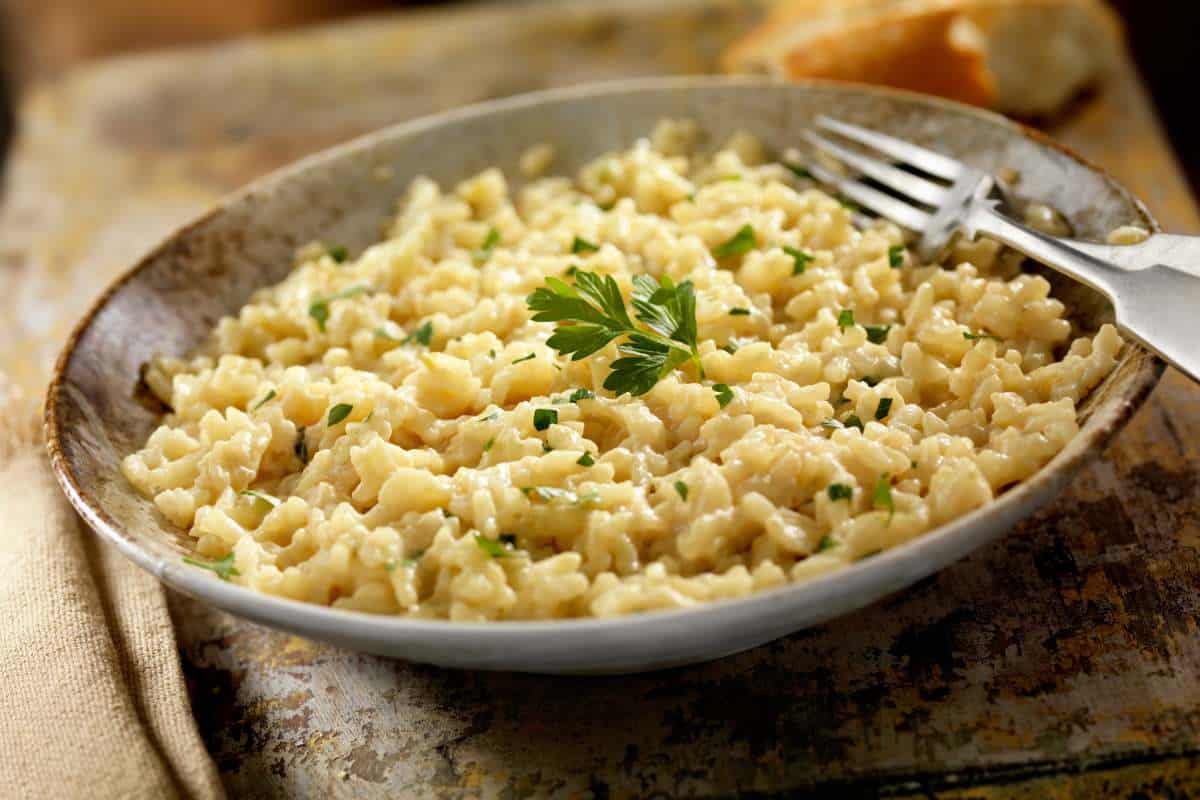
The reason that Tuscan bread is not very salty has a historical basis. In fact, in 1100, Pisa reportedly put a tax on salt, forcing Tuscans to rebel by not purchasing any salt instead of paying the tax.
Risi e bisi is an Italian rice dish consisting of risotto rice, peas, butter, stock, and Parmigiano Reggiano cheese. The dish is traditionally prepared on April 25 in Venice and the surrounding areas, celebrating the feast of its patron, Saint Mark.
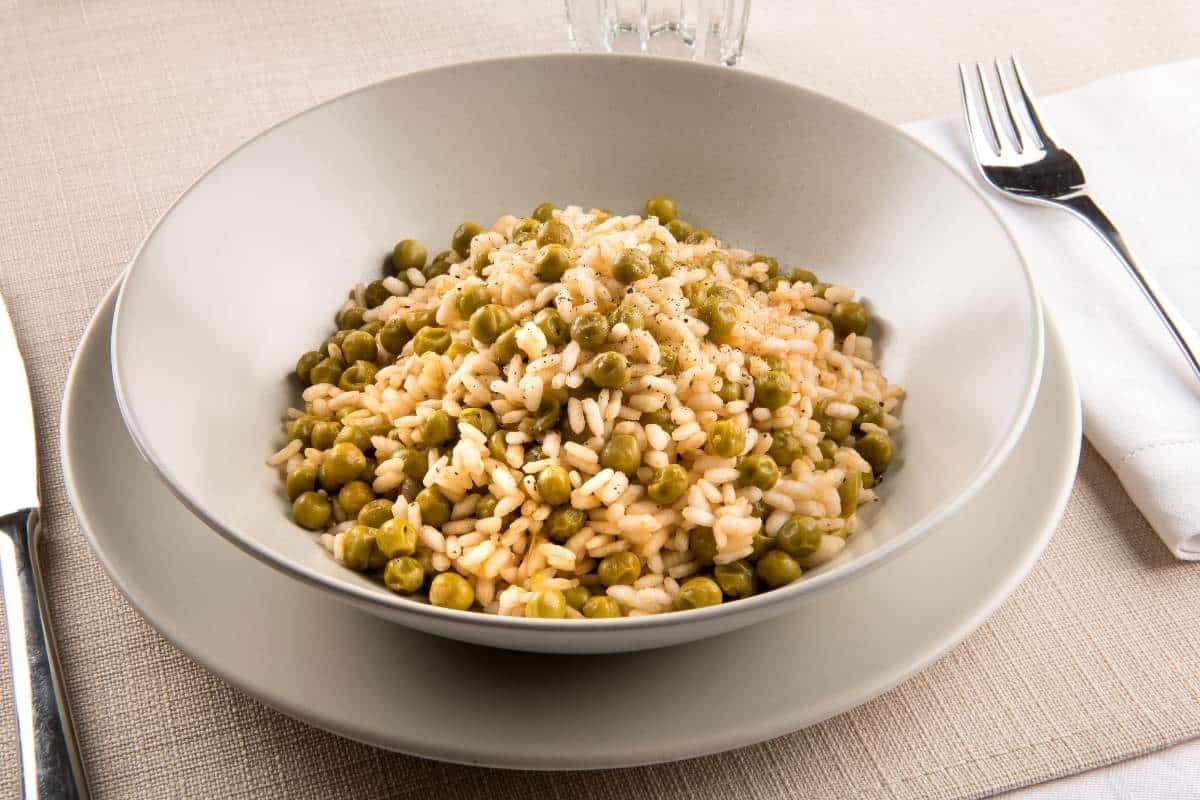
Etiquette
Cleaning your plate with a piece of bread after finishing your pasta is called fare la Scarpetta and is highly appreciated in traditional trattorias and osterias. It shows that you enjoyed the dish enough to “lick” the plate clean!
Dinner is the most important meal in the Italian culture. Therefore, it is normal to start the evening with an aperitif, or pre-meal drink, before the main dish. This social tradition is meant “to open” the stomach before dining.

Italians are obsessed with digestion. That’s why they never consume (and will judge you if you do) any beverage with milk after 11 am.
In Italy, walking whilst eating is unacceptable and considered rude.
Italians take their food seriously so don’t be surprised if you’re at a restaurant and they say that they don’t have pizza with pineapple on it.
Before tucking into a meal, Italians wish each other “Buon appetito,” which means to enjoy your dish!
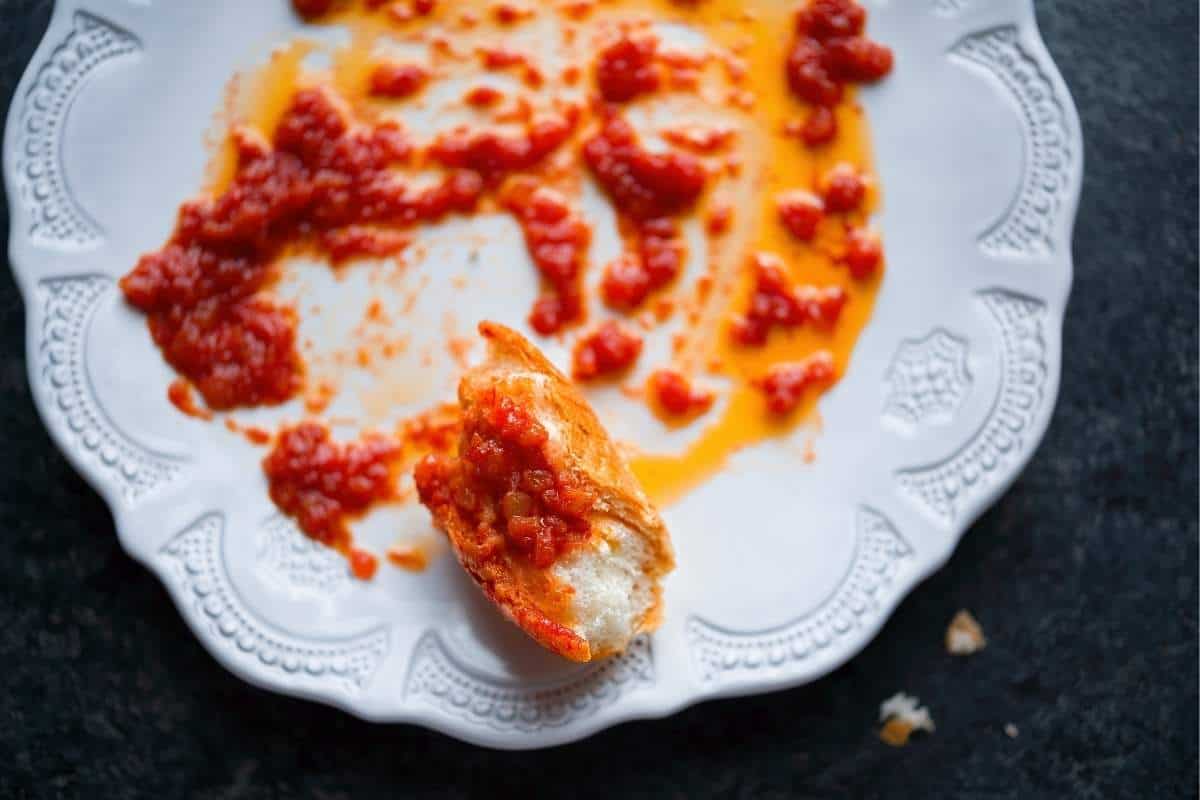
Geography
Italy has 20 regions. Each of them has a unique history, culture, and cuisine. This is why an Italian dish may have many variations!
Tuscany is the most important and famous Italian wine-growing region.
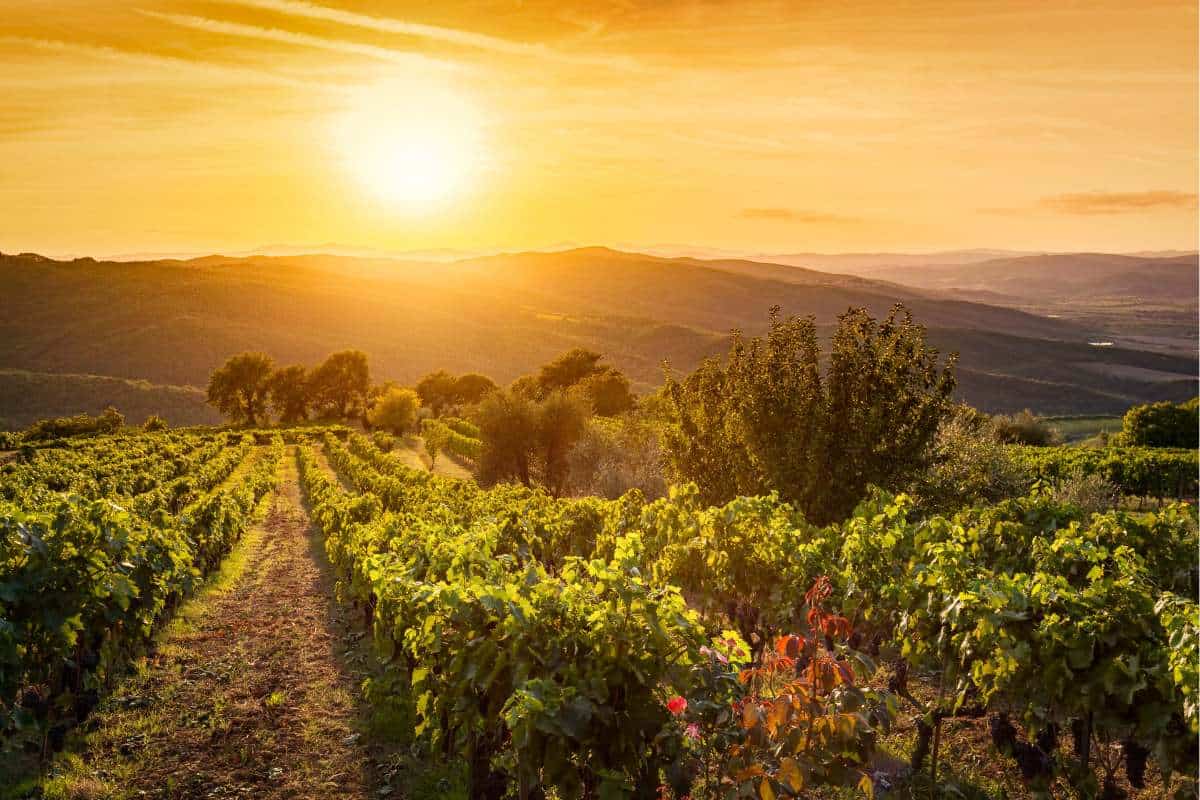
The scarcity of cattle pastures forced the Ligurians to develop dishes based on alternative ingredients such as fish, herbs, and game meat.
Bologna (in the Emilia Romagna region) is considered by most to be the food capital of Italy and arguably produces many of the best Italian dishes.
Frutti di Mare is a popular multi-seafood dish along the coast of Italy. Frutti di Mare literally means “Fruit of the Sea” and can include all types of seafood, including mussels, clams, prawns, and other shellfish in a tomato sauce.
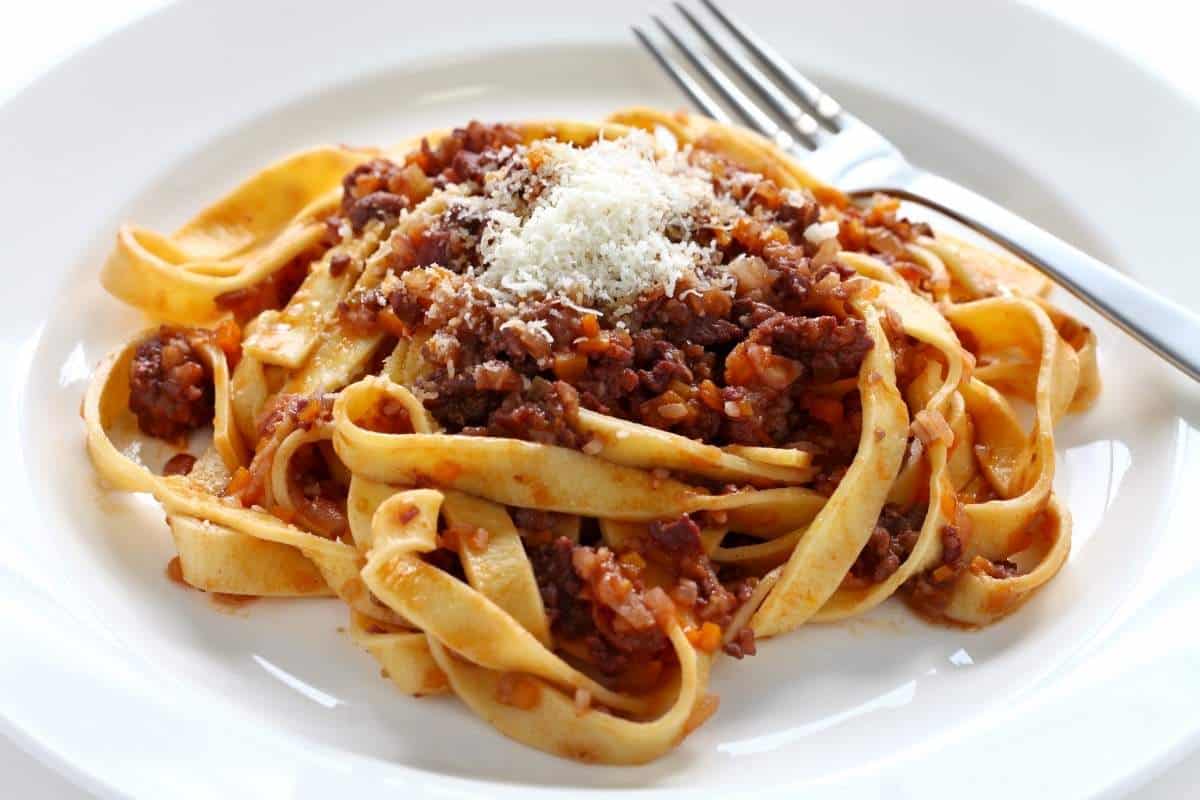
The original ragout, which abroad is called Bolognese, is best eaten in Bologna or in Tuscany. It is a tomato-based meat sauce that is used as a basis in many foods.
Carbonara is a type of pasta dish that originated in the city of Rome.
While both Roman supplì and Sicilian arancini are technically both deep-fried rice balls, the main difference is that suppli rice balls are made with rice and mozzarella, while arancini are made with rice, mozzarella, and usually add in beef and peas. No matter the region, these deep-fried delights are popular antipasti.
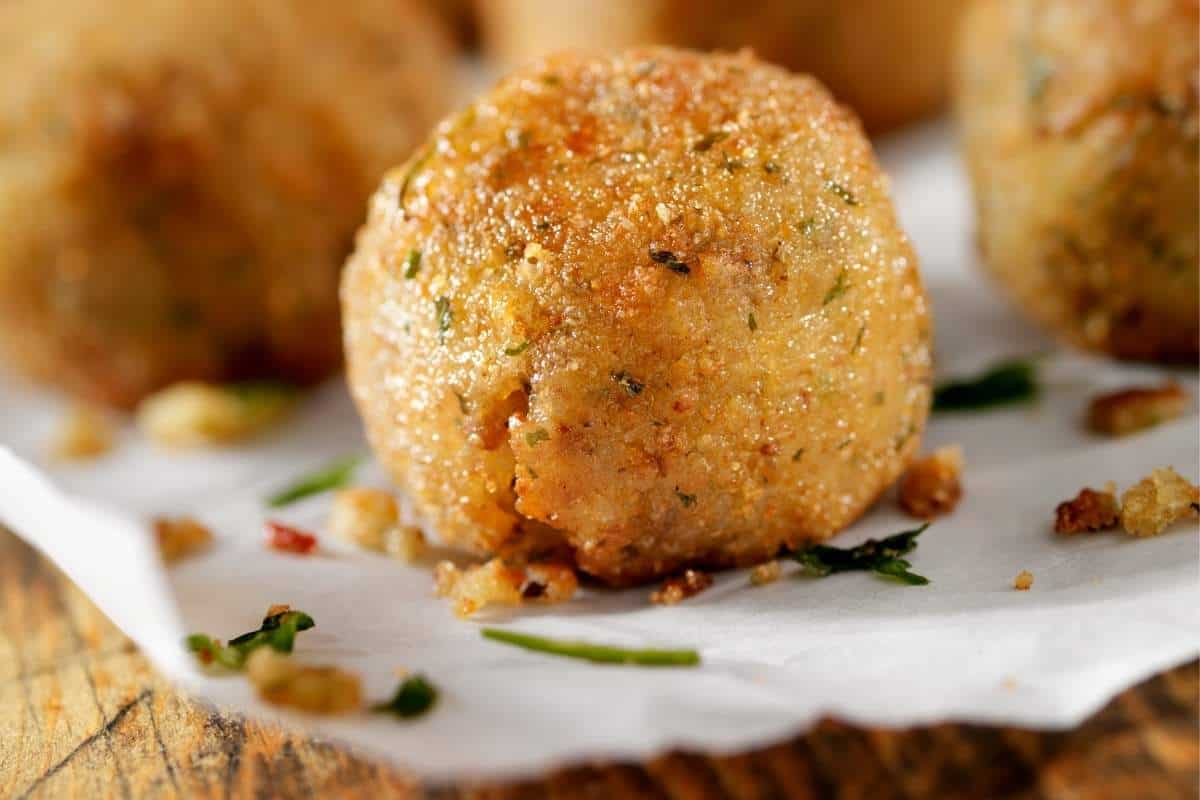
Osso buco literally translates to “bone with a hole” in Italian. The dish originated in the Lombardy region in the 19th century and traditionally uses veal shanks.
Lavarello is a fish unique to Lake Como where you’ll find many restaurants specializing in cooking it.
Nothing compares to the flavor of white truffle, and Italy has a plethora of the rarest kind. Called the “diamond of the kitchen,” hauls of white truffles are harvested from October to December mainly in the northern region of Tuscany in Italy.
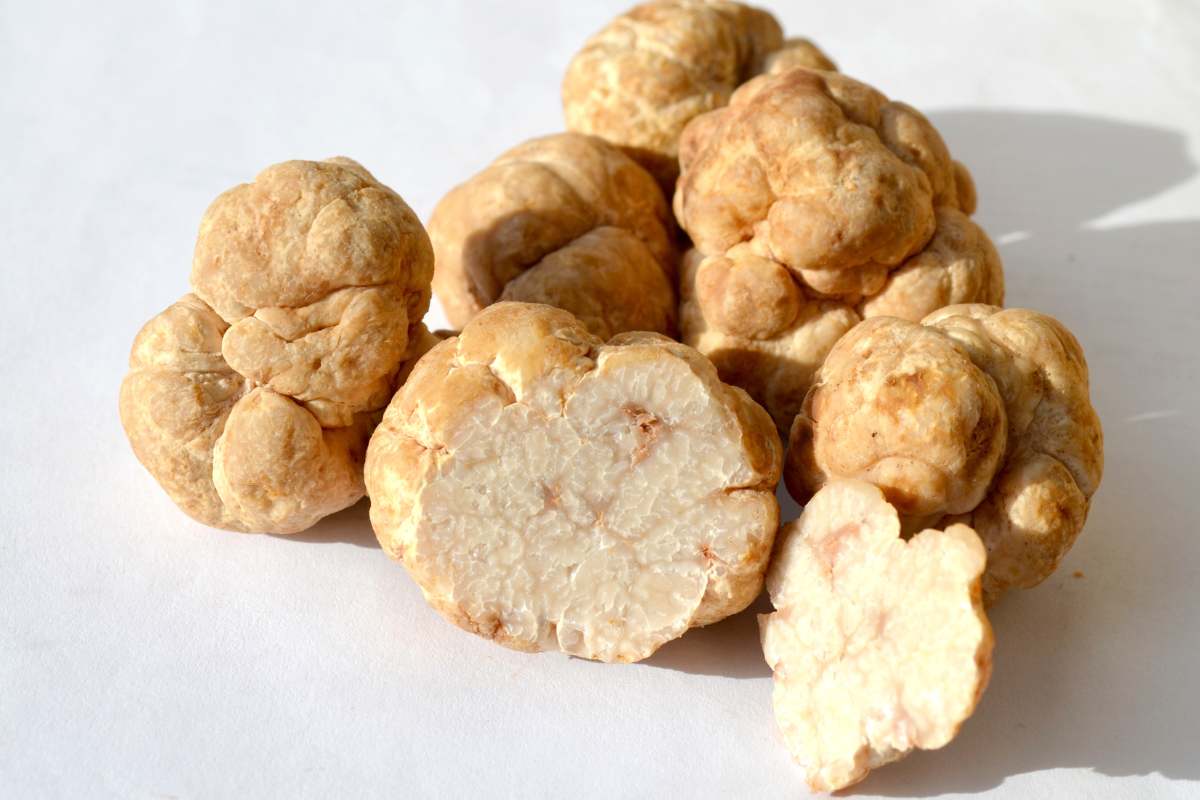
The region of Emilia Romagna is known for its medieval cities, sunny beaches, and some of the best cuisine in Italy: Bologna has its pasta and meat sauces, Parma its famed ham and parmigiana cheese, and Modena the world’s finest balsamic vinegar. If you’re eating your way around Italy, Emilia Romagna region is definitely a must-visit.
Italian piadina is a thin flatbread that is paired with many foods and is typically prepared in the Romagna region.
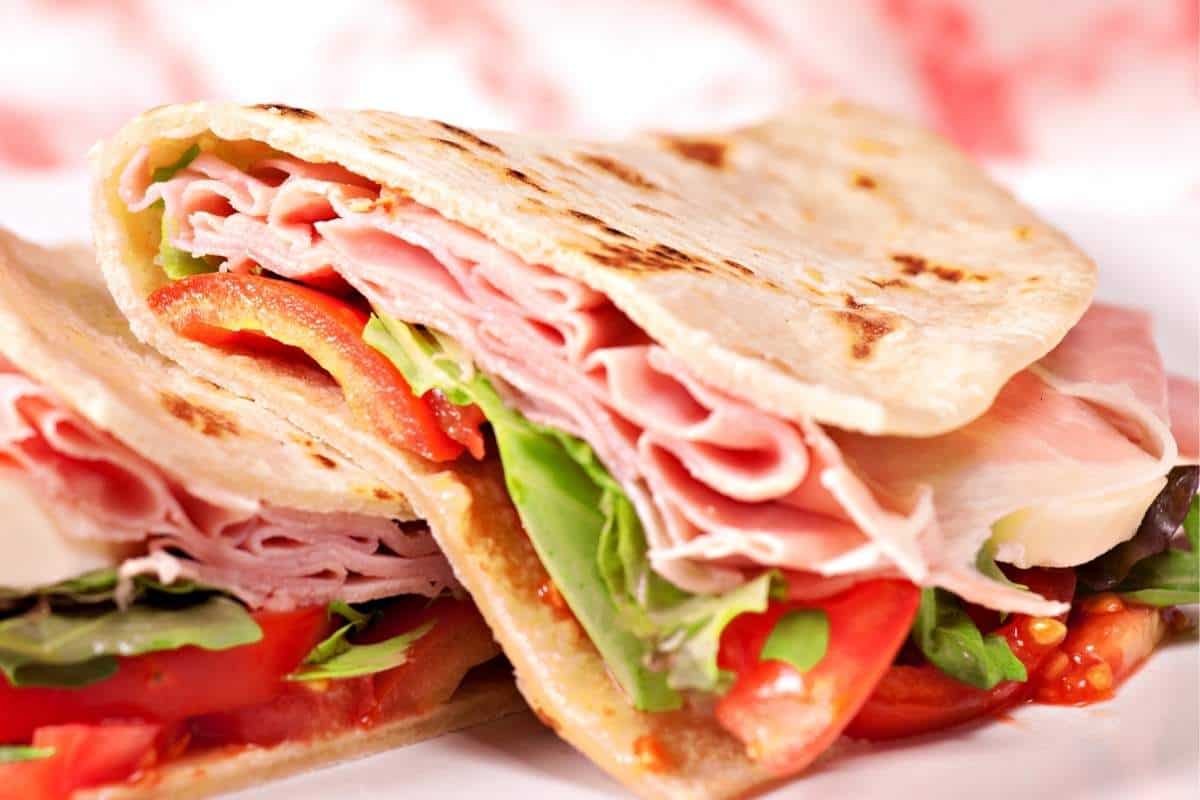
Cheese / Formaggio
The color of fresh mozzarella cheese is white but usually turns yellow when seasoned depending on what the cow has been eating.
Parmesan cheese is produced in the provinces of Reggio Emilia, Parma, and Modena. That’s why it’s called Parmigiano Reggiano in Italian.
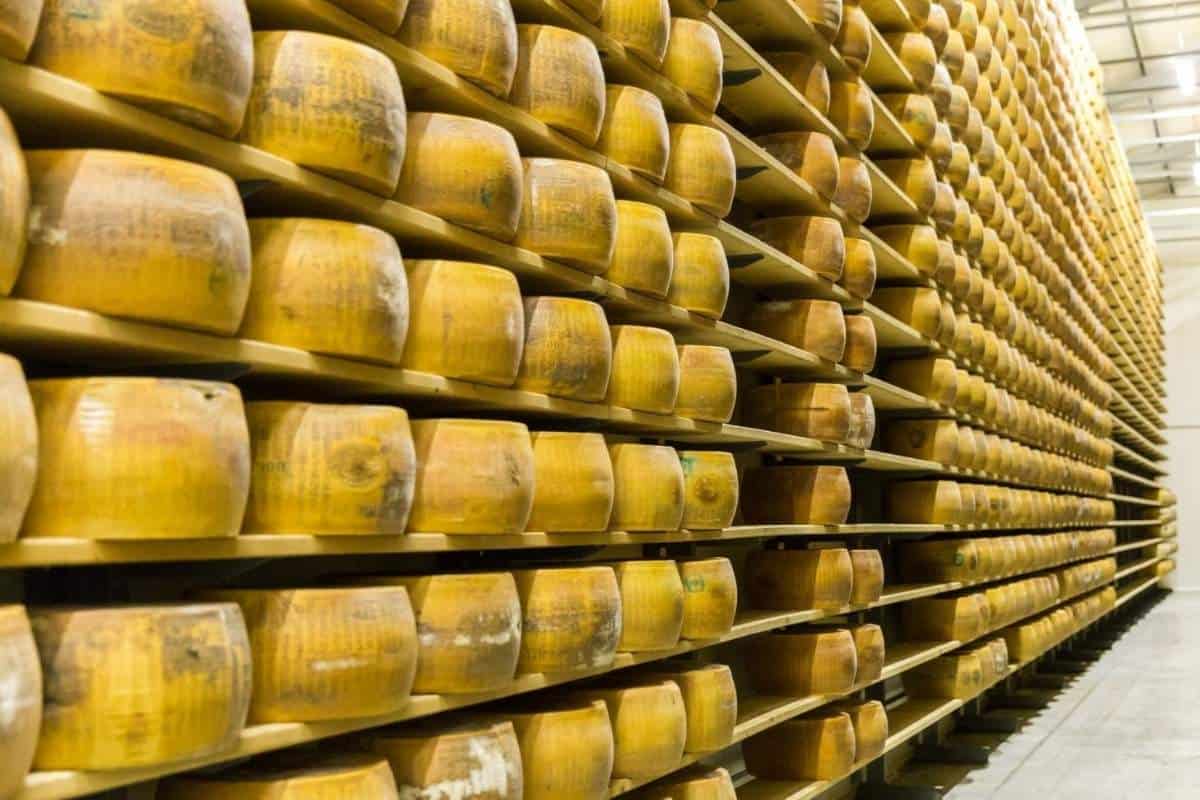
The Casu Martzu cheese from Sardinia goes beyond typical fermentation to a stage of decomposition brought about by the digestive action of living cheese fly larvae. So basically, rotting cheese with worms.
Mozzarella di Bufala is a type of mozzarella cheese made from the milk of an Italian Mediterranean buffalo. However, only bufala mozzarella from the Campania region bears the “Mozzarella di Bufala Campana” status.
Grana Padano is a type of hard cheese that has been produced for over 1,000 years with the same recipe. It originates from the provinces of Trento and Brescia in Northern Italy and is used in many Italian foods.
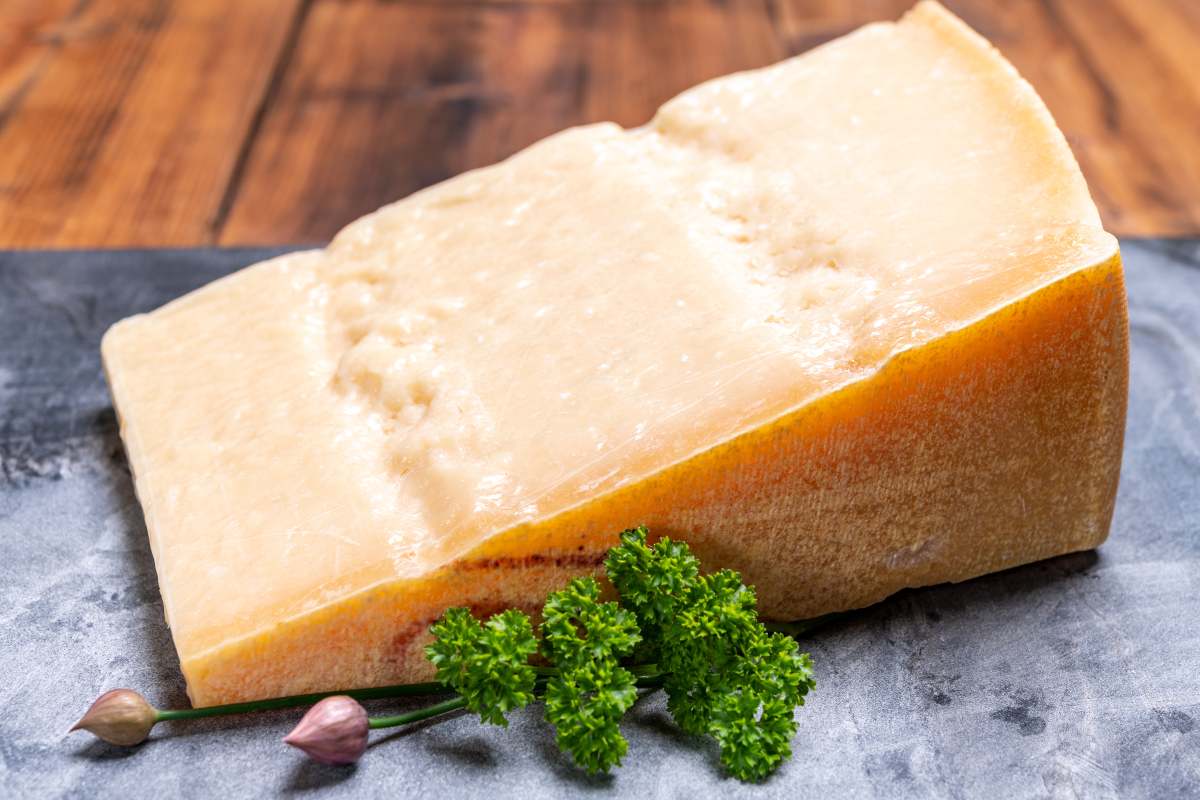
Although Italy exports numerous types of cheese (including parmesan cheese, and Parmigiano Reggiano) mozzarella cheese is the most exported of the Italian cheese varieties!
Pecorino Romano is a hard, salty Italian cheese made with sheep’s milk. The name “pecorino” simply means “of sheep” in Italian.
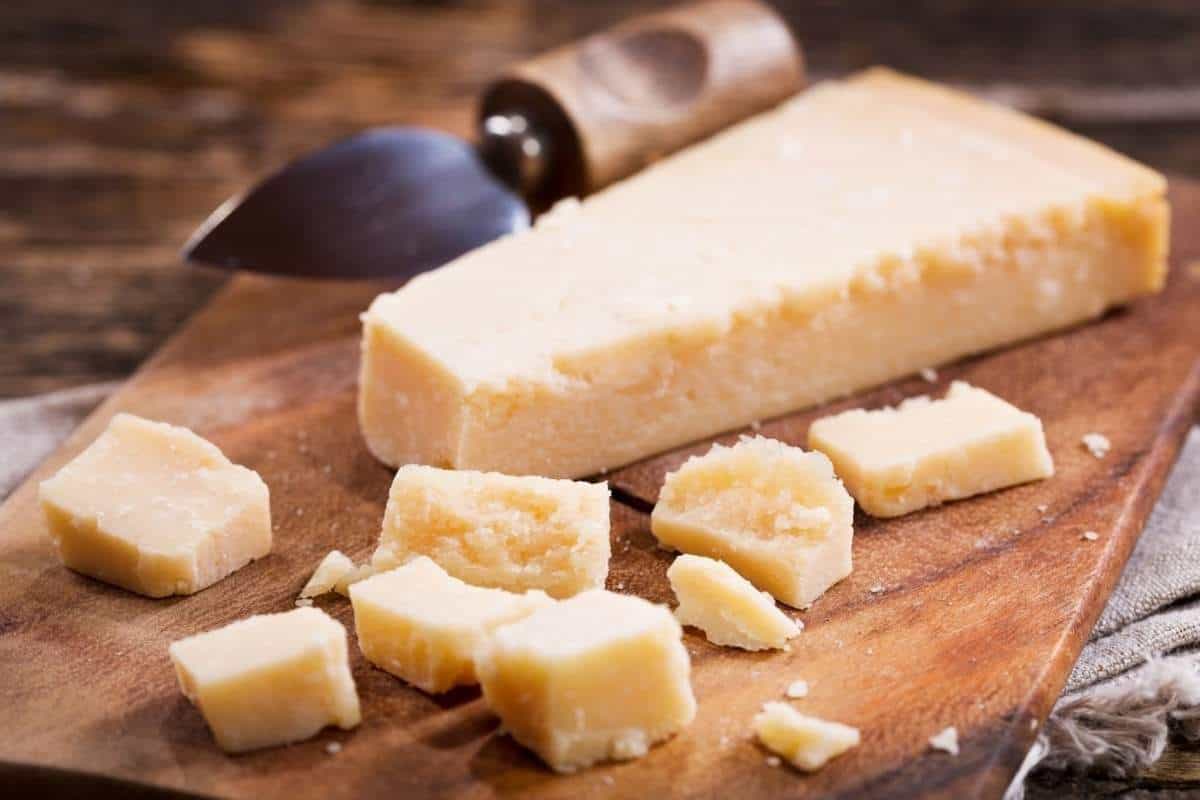
Traditional Pasta Dishes
Spaghetti and meatballs are not an Italian dish, but that doesn’t mean that the Italians didn’t invent spaghetti!
Each type of pasta is associated with a different town or region in Italy. That’s why there is so much variety in Italian cooking!
Before the World Wars, pasta was reserved only for special occasions. Now it is one of the staple foods in Italy.
Rome has a museum exclusively dedicated to pasta and typical Italian foods.
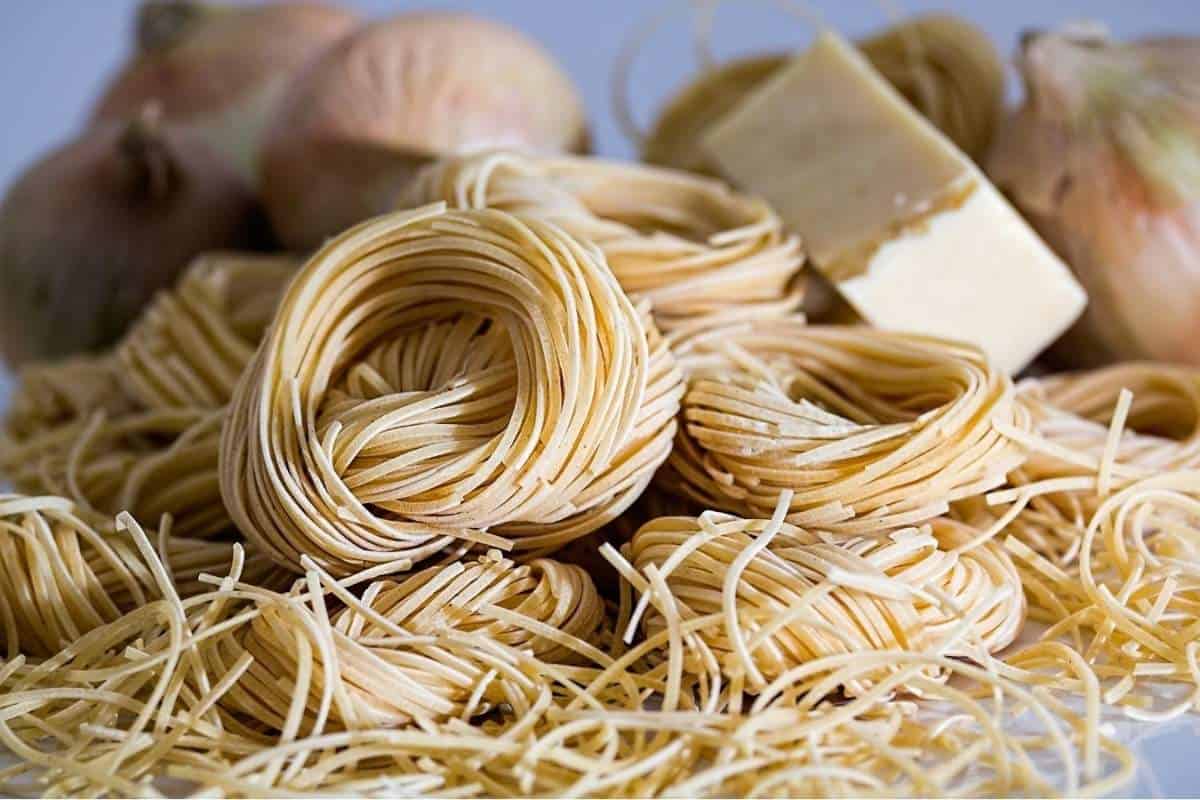
Spaghetti carbonara originated in the region of Lazio, according to most sources. However, some sources trace its origin back to the Second World War, where American soldiers invented it during the Italian campaign.
The biggest mistake you can make with carbonara is to ask for cream. The creaminess of carbonara is already present in the egg sauce, and any changes to this process would only serve to lessen its original flavor.
The typical Italian consumes about 23.5 kilograms of pasta each year.
The popular Italian noodle-shaped pasta, Penne derives from the Latin Penna which means “feather” or “quill”.
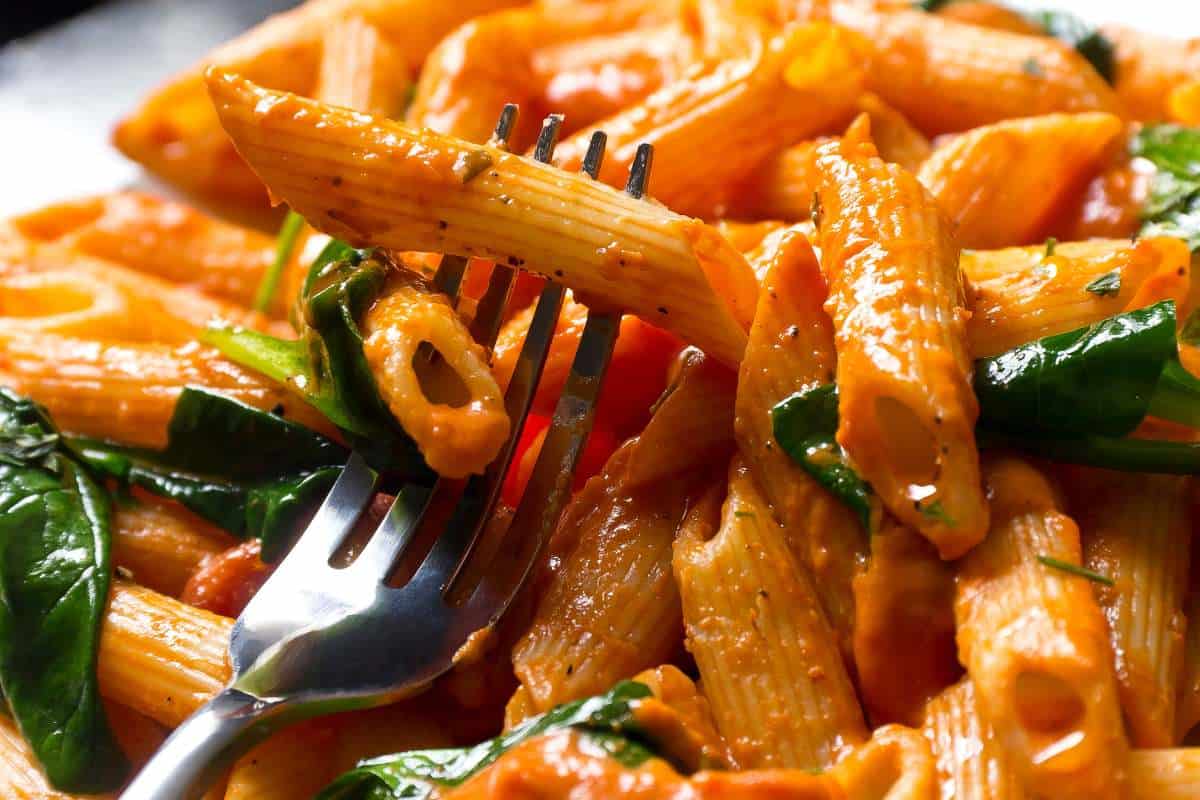
Manicotti is a stuffed pasta dish made up of ricotta cheese, black pepper, cheese (like parmesan cheese or pecorino cheese), eggs, and other seasonings stuffed into a flat pasta tube and covered with tomato sauce. Note that this is its name in the United States, it is called cannelloni in Italy.
‘Alla’ in Italian literally translates to “in the style of”, at least when talking in a culinary context. That is why there are such Italian dishes as ‘risotto alla milanese,’ ‘bistecca alla fiorentina,’ and descripting factors in titles to dishes such as ‘alla milanese,’ ‘alla romana,’ and ‘spaghetti alla [insert region]’. It acts as a designation of the origin of Italian cooking.
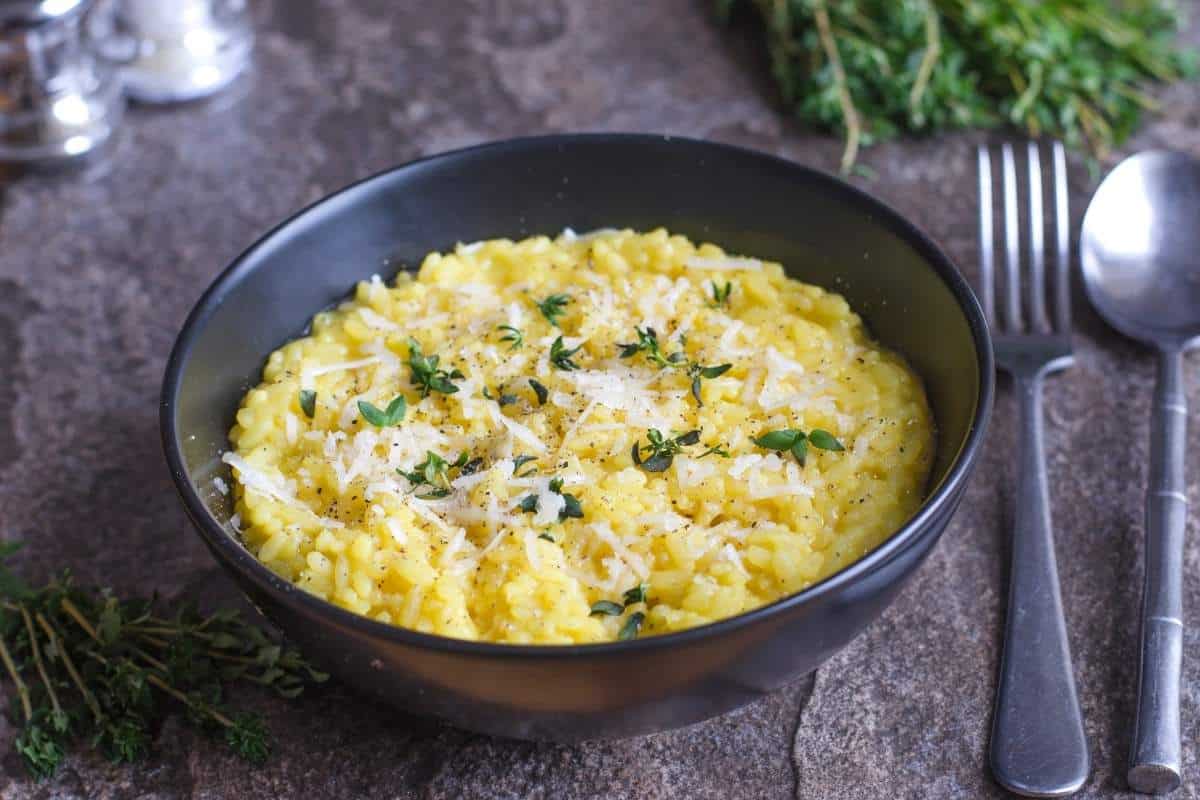
The Sweet Stuff / Dolci
Tiramisu has a protected status certification by the European Union. That means its recipe can’t be modified by any means.
There is a Tiramisu World Cup celebrated every year in Veneto, where dozens of participants compete for the prize of the best Tiramisu. (Where do we sign up to be a judge?)
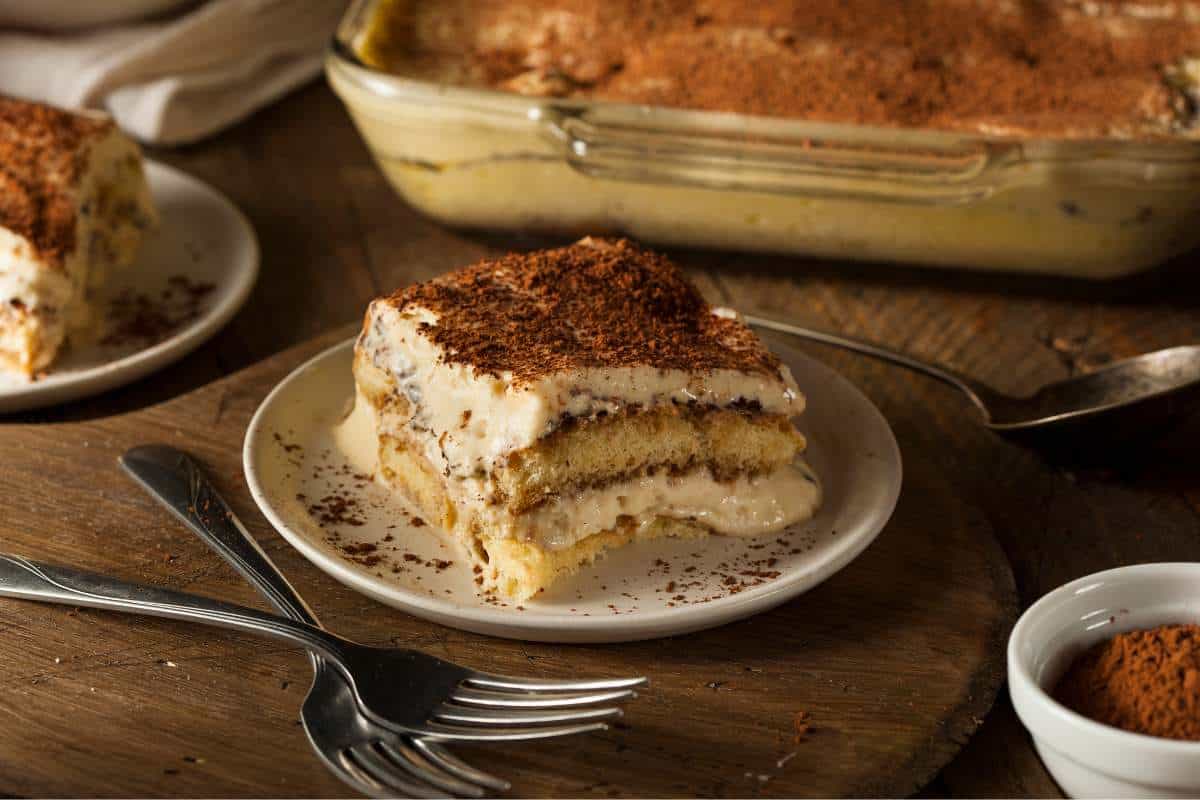
The sweet treat with ties all the way back to the Romans, biscotti means “twice-cooked” but can also refer to a variety of cookies in Italian.
Cannoli was first created on the Italian island of Sicily for their Carnivale celebrations. Carnivale has numerous similarities to Mardi Gras and cannoli came to serve as a symbol of fertility.
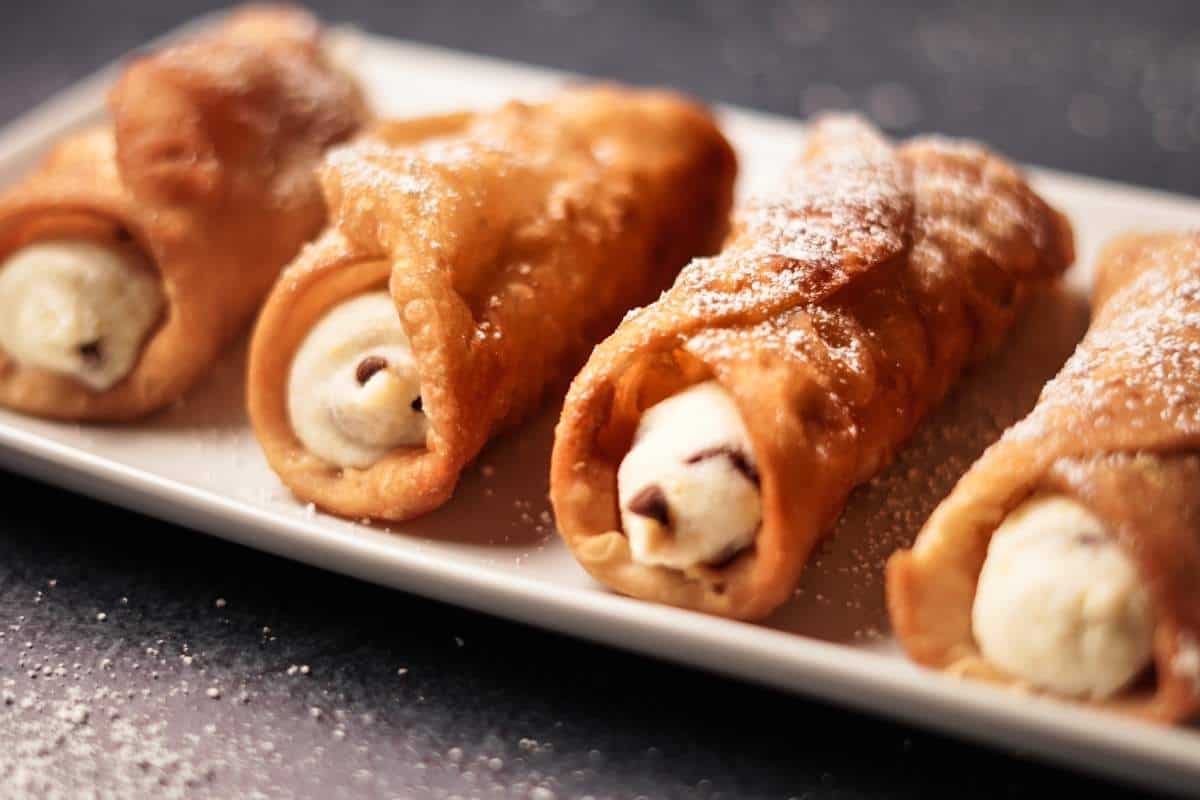
Gelato – Italy’s Ice Cream
Before electricity, Gelato was prepared by mixing ice, salt, milk, eggs, and flavor (most popular ones being vanilla, chocolate, pistachio, and hazelnuts) and then burying the mix in a hole in the ground to preserve the low temperature.
Every September, Florence celebrates its famous Festival del Gelato or Gelato Festival.
Gelato translates as frozen from Italian. Gelato is different from ice cream because it uses more milk and less cream, plus generally doesn’t use egg yolks. It is also churned at a much slower rate, incorporating less air. This leaves gelato denser than ice cream.
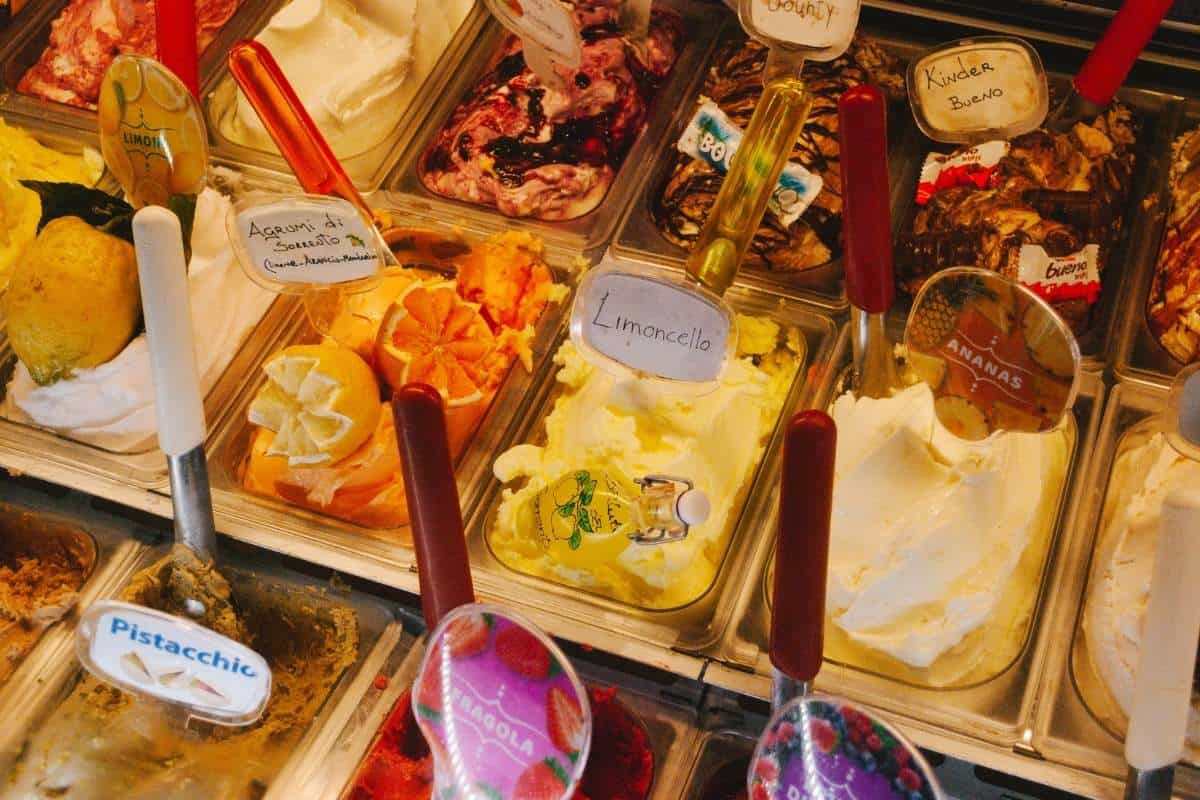
The Indelible Tomato / Pomodoro
While tomatoes are a staple of Italian cuisine, they were actually originally farmed by the Aztecs and only arrived in Europe during the Columbian Exchange.
Tomato sauce is first referenced in the Italian cookbook Lo Scalco alla Moderna (The Modern Steward), written by Italian chef Antonio Latini in 1692.

Marinara is probably the simplest of all the classical Italian pasta sauces and refers to a particular preparation of tomato sauce. It was given the name marinara because it was the preferred meal of Italy’s merchants during long expeditions at sea.
Alla Bolognese generally means “with ground meat”. So in Italy, Bolognese sauce is a tomato-based sauce and adding ground meat to it creates a meat sauce. It may be called either “sugo or ragù (both mean sauce) alla Bolognese.”
The All-Important Olive Oil / Olio d’Oliva
The largest importer of Italian olive oil is the United States of America. Italy exports more olive oil to the USA than anywhere else in the world.
The Olea Europaea, or the Olive Tree came to Italy around 1,000 years ago by ancient Greeks.
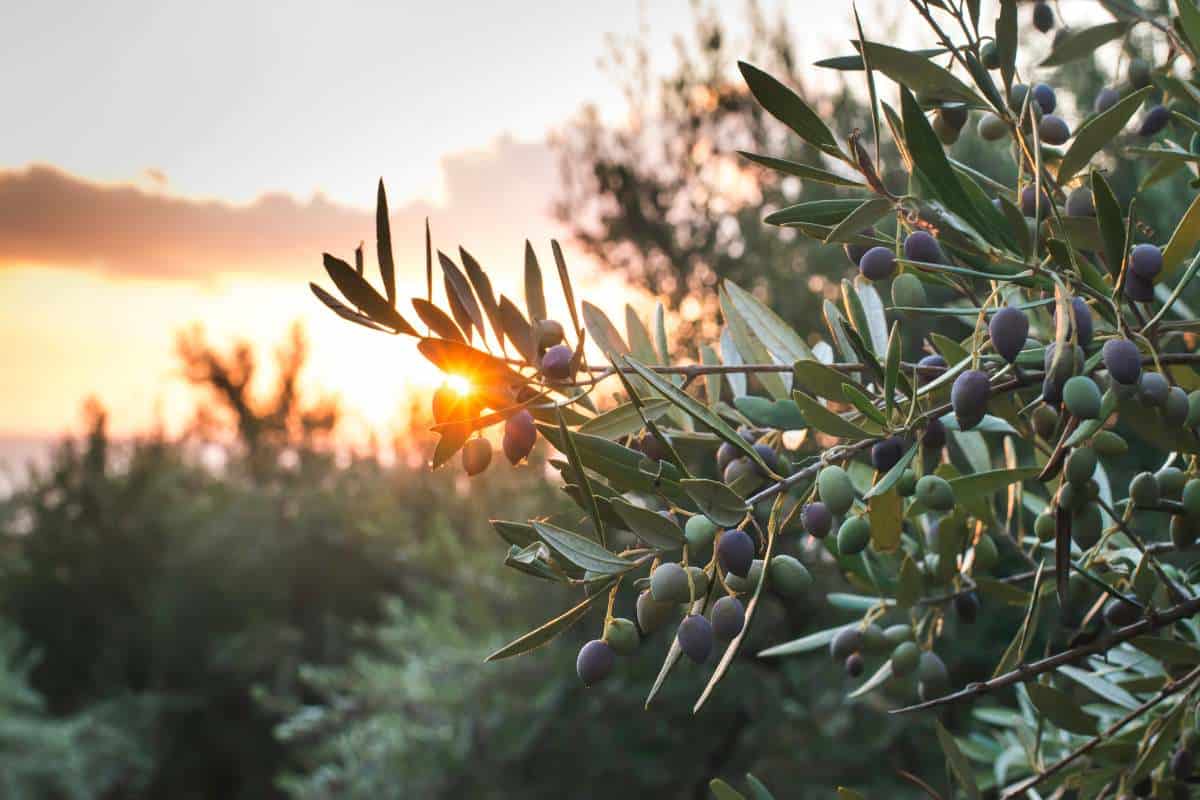
Italy is the world’s second-highest producer of extra virgin olive oil behind Spain.
Olive oil is a true staple in the Italian diet. It has a range of uses in Italian cuisine from adding it to bread, to enhancing delicious Italian fish and pasta dishes.
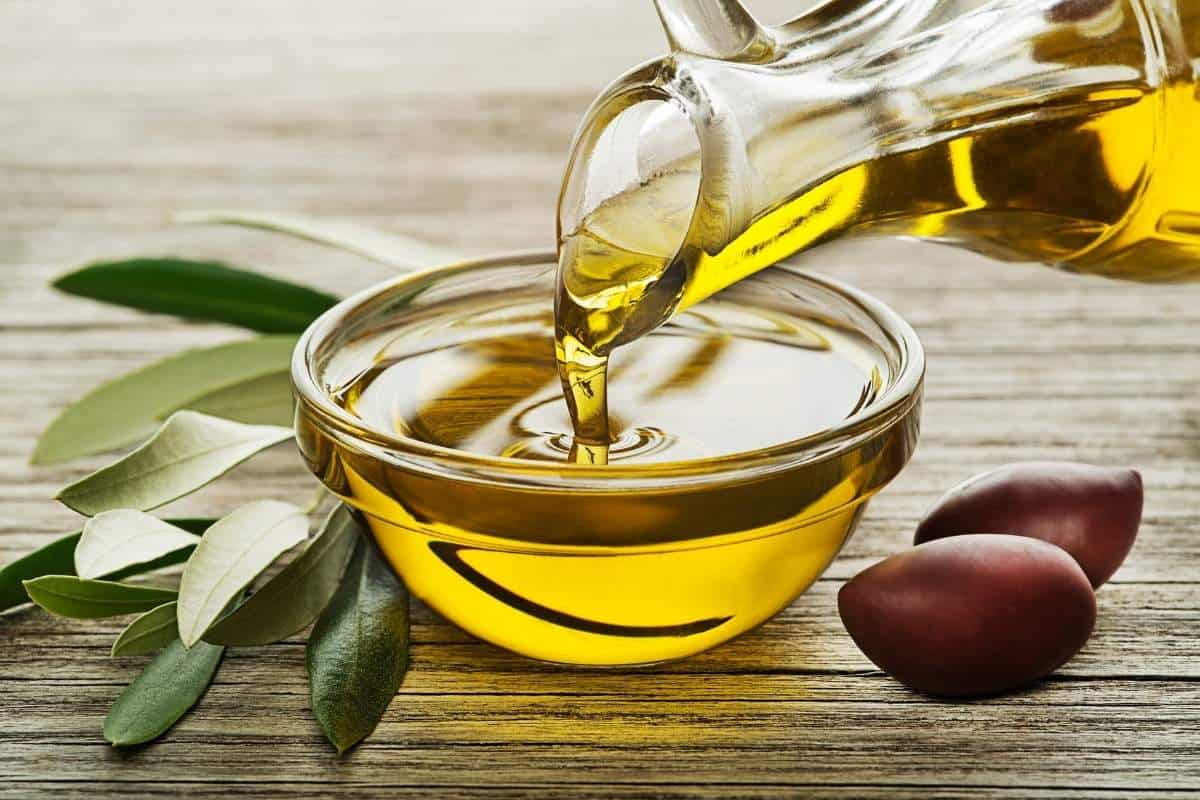
Italy is home to over 350 different varieties of olive, giving each oil a unique flavor.
Italians have many uses for olive oil including dressing, cooking, and preserving food – as well as in medicinal and beauty treatments.
Most Italian olive oil is produced in only a handful of regions. Though olive oil is used in regional cuisine from the Dolomites to Sicily, it is only produced in about six regions. Also, the olive oil tastes different in the different regions.
Don’t Forget About Pizza
The marvelous aromas and savory flavors of Naples’ handmade pizzas are so epic, UNESCO named the art of making them a piece of intangible heritage!
Oftentimes, Italian ristorantes don’t sell pizza. Pizzerias are the places you need to go for that.
Naples hosts the world’s largest celebration of pizza every year – perhaps the most famous traditional Italian food. The party lasts from 5 to 11 days.

Italians don’t traditionally have rounded pizza for lunch. They instead get thicker slices of pizza at a take-out pizza place locally known as pizza al taglio.
Port’Alba, an Italian pizzeria founded in the early 19th century, is widely believed to be the first pizzeria in the world.
Raffaele Esposito is considered by some to be the father of modern pizza after he prepared one for the Queen Margherita of Savoy back in 1889.
Beverages
Coffee
It’s fair to say that Italians consume a lot of coffee, on average of 6kg per person per year!
While the Italian word corretto simply means corrected, caffe’ corretto is an espresso mixed with a dash of alcohol.

Espresso was invented in Italy during the early XIX century. During the Second World War, American soldiers weakened the strong espresso flavor with hot water, thus creating the American espresso.
Alcoholic Beverages
Limoncello is an Italian lemon liqueur made with lemon zest, sugar, and vodka. Arguably, the best place to drink limoncello is on the Amalfi coast.
While the limoncello is originally from the Amalfi Coast region, it is drunk and known as limocino in northern Italy.
Italy produces more wine than any other country in the world, exporting both red wine and white wine by the litre.

Lambrusco, both the name of the grape and the sparkling red wine that is made from the grape, is the most famous wine in the Emilia Romagna region. Its history goes back centuries, all the way to the Etruscans!
Italian Food
Italy is one of the countries that people travel to solely to sample different food and satisfy their appetites. It is a cuisine well known around the globe, and also very well-loved. Italian cuisine has a rich history that dates back several centuries to some of the most distant roots of different culinary traditions around the world!
Exploring the country and tasting food from Italy is definitely a bucket list experience. Italian foods are steeped in history, use quality ingredients, and are reminiscent of a much simpler time, when food brought people together – to slow down and savor a dish with those you love. To eat in Italy is to enjoy an experience that transcends time and space.
Now that you’ve read the whole post, go test your knowledge in our quiz about Italy food facts!
[adinserter name=”Block 1″]


